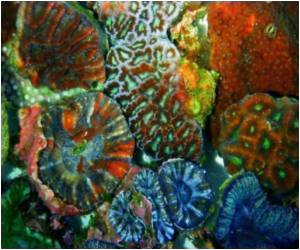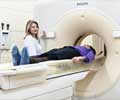A balance between reef construction and reef breakdown is maintained by Coral reefs. Complex calcium carbonate framework is formed as the corals grow and provides habitat for fish and other organisms.

To measure bioerosion, researchers deployed small blocks of calcium carbonate (dead coral skeleton) onto the reef for one year. Traditionally, these blocks are weighed before and after deployment on the reef; however, HIMB scientists used microCT (a high-resolution CT scan) to create before and after 3-D images of each block. According to Nyssa Silbiger, lead author of the study and doctoral candidate at HIMB, this novel technique provides a more accurate measurement of accretion and erosion rates.
The researchers placed the bioerosion blocks along a 100-ft transect on shallow coral reef in Kāne'ohe Bay, Hawai'i, taking advantage of natural variability of pH in coastal reefs. The study compared the influence of pH, resource availability, temperature, distance from shore, and depth on accretion-erosion balance. Among all measured variables, pH was the strongest predictor of accretion-erosion. Reefs shifted towards higher rates of erosion in more acidic water - a condition that will become increasingly common over the next century of climate change.
This study also highlights the impact of fine-scale variation in coastal ocean chemistry on coral reefs. Current models from the International Panel on Climate Change (IPCC) predict changes in pH for the open ocean, but these predictions are problematic for coral reefs, which are embedded in highly variable coastal ecosystems. The study found dramatic differences in ocean pH and in the daily variability of pH across a short distance.
"It was surprising to discover that small-scale changes in the environment can influence ecosystem-level reef processes," said Silbiger. "We saw changes in pH on the order of meters and those small pH changes drove the patterns in reef accretion-erosion."
Silbiger and colleagues are learning all they can from the microCT scans, as this is the first time before-and-after microCT scans were used as a measure of accretion-erosion on coral reefs. In ongoing work, they are using this technology to distinguish between accretion and erosion and to single out erosion scars from specific bioeroder groups (e.g., holes from boring worms versus bioeroding sponges). The researchers are also using this technology to investigate the drivers of the accretion-erosion balance over the much larger area of the Hawaiian Archipelago.
Advertisement















